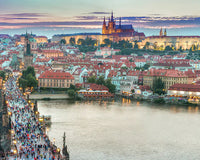Johannesburg, often nicknamed "Jozi" or "Joburg" by locals, is a major cultural and economic metropolis at the heart of South Africa. As such, the city offers a wealth of experiences, from history museums to vibrant nightlife.
In this travel guide, we'll explore why Johannesburg is a must-see destination, how many days to spend there, and the best things to do!
Why go to Johannesburg?
Johannesburg is not only the economic centre of South Africa but also a focal point of South African history and culture.
Indeed, the city plays a key role in the history of apartheid and is the site of many important monuments, such as the Apartheid Museum and Nelson Mandela's home in Soweto. It is also the seat of South Africa's Constitutional Court, although it is not the country's capital.
It is also a city with a wide variety of languages: Zulu, Sotho, Xhosa, Afrikaans, Tswana, Sepedi, English... several languages are represented. Finally, Johannesburg is renowned for its thriving arts scene, with contemporary art galleries and lively street markets.
Johannesburg's mining heritage: discovering the Witwatersrand
Johannesburg, nicknamed the "City of Gold", owes its foundation and growth to the Witwatersrand, the ridge of sedimentary rock that runs through the region. It was here that gold was discovered in 1886, triggering a gold rush that transformed the region.
Today, although the mines are no longer as active, the impact of those golden days is still palpable in the town's culture and architecture.
Weather in Johannesburg
The weather in Johannesburg is generally mild, making it a pleasant destination all year round. Summers are hot and stormy, while winters are mild and dry.
The best time to visit depends on your climate preferences, but March to May and September to November offer particularly pleasant weather. Choose your dates carefully!
How many days should I spend in Johannesburg?
To really appreciate what Johannesburg has to offer, we recommend spending at least three to four days. This will allow you to visit the main historical and cultural sites without rushing and to immerse yourself in the unique atmosphere of the city. If you have more time, consider day trips to nature reserves or neighbouring cities such as Pretoria.
The Apartheid Museum: discover the country's defining history

The Apartheid Museum is a must-see for any visitor to Johannesburg. This award-winning museum offers a detailed and moving insight into South Africa's system of racial segregation, and its peaceful abolition through the efforts of Nelson Mandela and other activists.
We recommend that you opt for a tour with a guide for an even more rewarding experience. Allow between 2 and 4 hours for a full tour of the Museum.
Soweto: discovering Nelson Mandela's House
Located around 20 minutes' drive from the city center, the municipality of Soweto, which stands for "South Western Townships", is a fascinating blend of traditional culture and modern history.
Formerly known as the symbol of resistance against apartheid, Soweto now boasts tourist sites where you can learn more about the struggles and victories of the South African people.
Nelson Mandela House is one of these must-see sites. This humble red-brick house was the home of the famous South African leader for more than 14 years before he became president in 1994.
On a guided tour, you can explore the different rooms of the house and learn more about Nelson Mandela's daily life and his fight for equality and freedom. You can also visit the museum adjoining the house, which traces the history of apartheid and its impact on the people of South Africa.
Hector Pieterson Memorial: a look back at a tragic event
This memorial, located 2 steps from Nelson Mandela House, commemorates the tragic death of Hector Pieterson, a young student shot dead by the police during anti-apartheid demonstrations in 1976.
The tour will take you through the museum galleries, which recount the events of this dark period in South African history and honor the victims of the fight for freedom.
The Maboneng district: urban regeneration and street art

Located in the east of Johannesburg, the Maboneng district is a true symbol of renewal and cultural diversity in South Africa. Once rundown and dangerous, this district has been transformed into a dynamic place with a mix of art galleries, trendy restaurants and community spaces. The results are breathtaking!
You can admire the many murals that adorn the buildings and discover a unique atmosphere thanks to the many local artists who live here and exhibit their work.
Visit Arts On Main, a renovated former warehouse that now houses art galleries, boutiques and restaurants for a truly authentic experience in the heart of this "cradle of creativity".
Relaxing at the Johannesburg Botanical Gardens
After a busy day exploring the Maboneng district, take a moment to relax at the Johannesburg Botanic Gardens. Stroll through the themed gardens and try your hand at activities such as canoeing and kayaking.
Discover local cuisine
Johannesburg's culinary scene offers a diverse menu, with a mix of African, European, and Asian flavors. Don't leave without trying biltong (dried meat), bunny chows (curry served in a hollowed-out loaf) and traditional Zulu dishes!
Shopping in Johannesburg
For shopping enthusiasts, Johannesburg offers a variety of shopping centers and local markets. Sandton City and Rosebank Mall offer a luxury shopping experience with a multitude of international brands, while Neighbourgoods Market and Market on Main are perfect for discovering local produce, artisan creations, and culinary delights at the weekends.
Lively nightlife: where to go out in Johannesburg?
Melville is the heart of Johannesburg's nightlife, where trendy bars, cafés, and clubs offer a lively and varied evening. For those looking for a more artistic vibe, Maboneng is the place to be, with its cultural events, art galleries, and innovative restaurants.
Discover the Cradle of Humankind
Located about an hour's drive from Johannesburg, the Cradle of Humankind is a must-see for history and prehistory enthusiasts. This archaeological site is home to human fossils over 2 million years old, as well as impressive caves and landscapes.











